CERRATEANA Pino & Kamm, 2018
Synonym : Echeveria andina n.n.
Series Racemosae
Type : E. Cerrate 073, Peru, Dept. Ancash, Prov. Bolognesi, Dist. Chiquián, 3560 m, Apr 08, 1949.
Etymology : Named for Emma Cerrate, who discovered and collected it.
Distribution : Peru : Recuay, Bolognesi and Orcos, the southernmost provinces of the Department of Ancash, close to the border of the Department of Lima, 2320 - 5160 m.
Description :
Plant glabrous.
Primary roots tuberous, born from a disc at the base of the stem.
Stem conspicuous, short, thick, erect, up to 6 cm long and to 3.2 cm thick, annularly constricted and with annular leaf scars.
Rosettes 3 - 18 cm wide.
Leaves 12 - 24, broadly ovate triangular when young, narrowly obovate to oblong in older plants, sessile, strongly attached, slightly recurved at tips, 4 - 10 cm long, 1 - 1.6 cm wide at middle, 3 - 7 mm thick, upper side flat to slightly canaliculate, dark red brownish in winter, shiny dark green and foveolate in the growing season, lower side subcarinate, apex acute with a 1 mm long mucro.
Flowering stems 1 - 2, oblique subterminal racemes, light green, rachis (25-) 35 - 45 (-60) cm long, bracts 22 - 30, narrowly ovate-oblong to lanceolate, 2 - 3.5 x 0.5 - 1.4 cm, upper side canaliculate, acuminate or mucronate, dull green, pedicels 0.4 - 1.8 cm long, same colour as scape or reddish because of minute red stripes, with a small bracteole at the middle.
Flowers 16 - 19, sepals united at base, unequal, frequently deflexed in mature flowers, very narrowly ovate or oblong acute, 6 - 10 x 1.5 - 2.5 mm, light green, corolla urceolate, subprismatical, 0.6 - 0.9 cm wide near base, 0.6 - 0.8 cm wide near apex, petals oblong, acute, 12 - 14 x 3.5 - 4 mm, outside yellow with minute red lines, redder at margins, tip and base, inside yellow.
Flowering time late December to February.
Note :
Compared with E. chiclensis, the leaves of E. cerrateana are shorter and broader and in the dry period of a unique red-brown colour ; the sepals are flat, linear and very acute, even mucronate and frequently deflexed when mature, and the flowers are more yellowish.
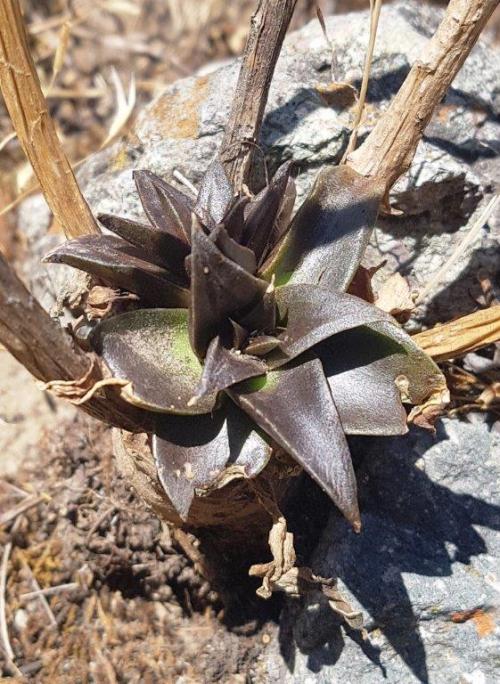
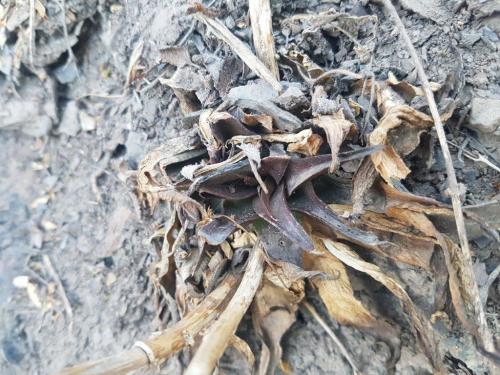
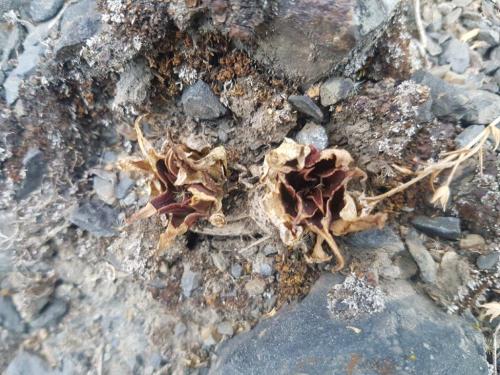
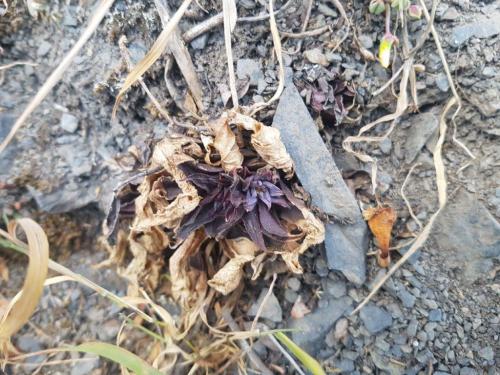
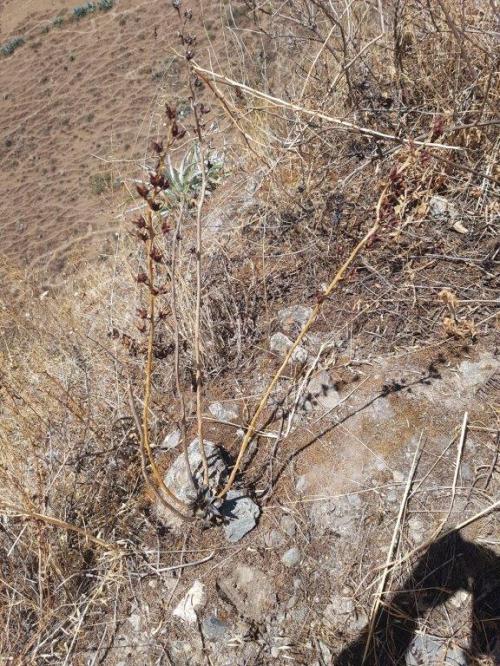
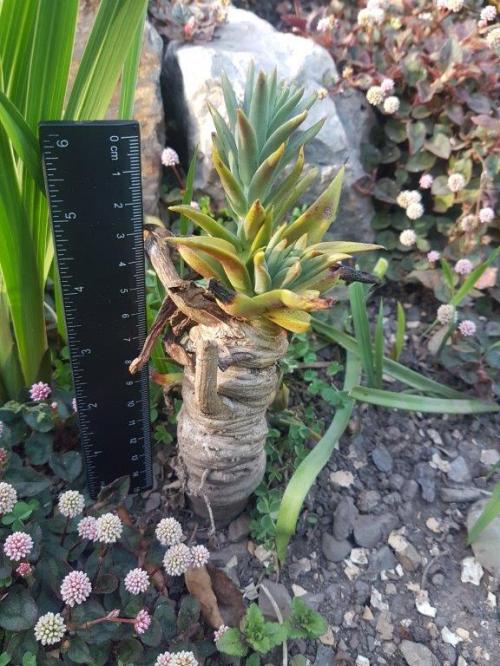
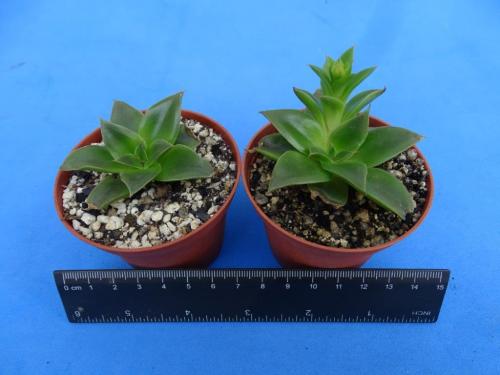
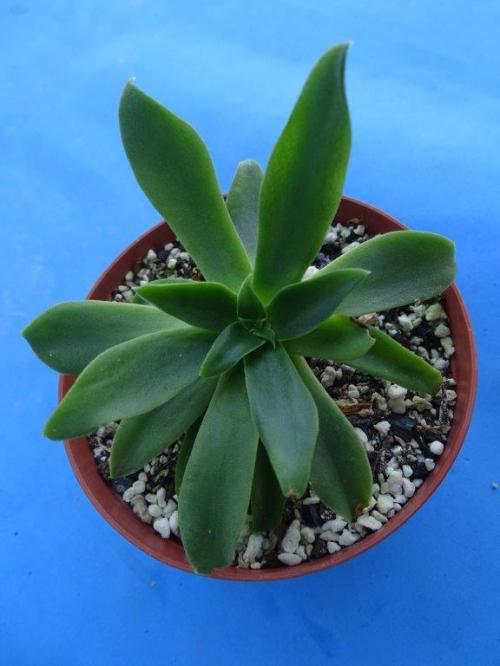
Photos Guillermo Pino
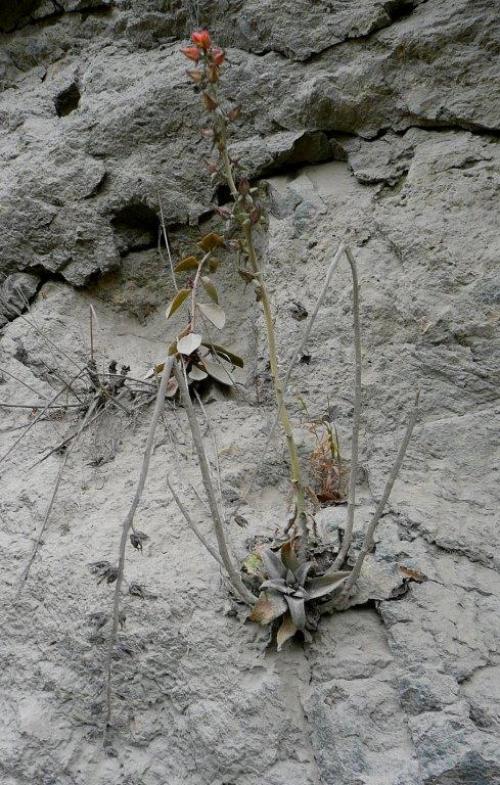
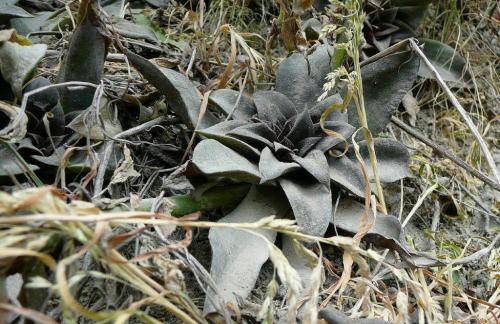
 367.jpg)
 373.jpg)
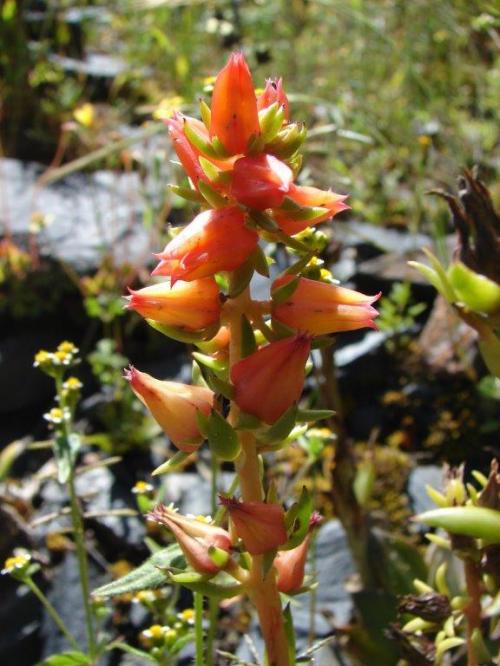
Photos Ben Kamm